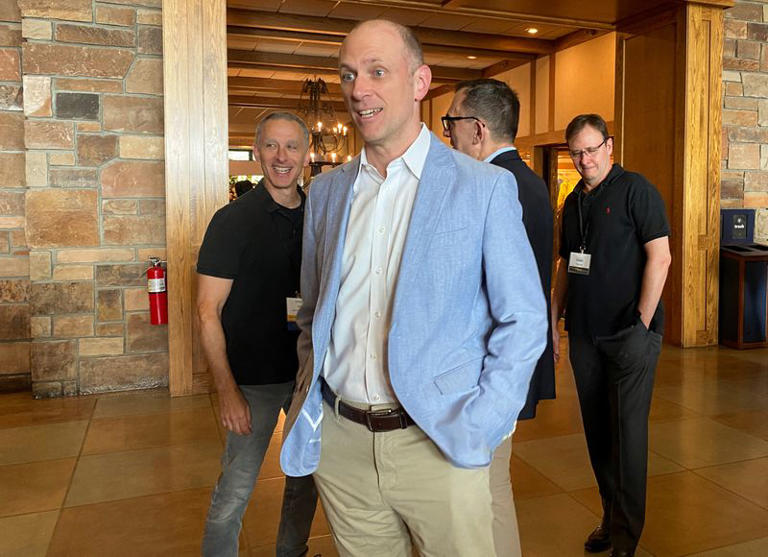U.S. central bank policymakers have taken a cautious stance on interpreting weaker-than-expected July jobs data, pushing back against the idea that the economy is in a recessionary freefall. However, they also indicated that the Federal Reserve might need to cut interest rates to avoid such an outcome, emphasizing the importance of monitoring incoming economic data closely.
San Francisco Fed President Mary Daly spoke at an event in Hawaii, stating that the recent job report’s details provide “a little more room for confidence that we’re slowing but not falling off a cliff.” Daly noted that the Fed’s policy rate adjustments in the coming meetings would depend heavily on upcoming economic data, with significant data releases expected before the Fed’s next meeting in mid-September. She stressed the importance of not letting the job market slow excessively to the point where it could tip into a downturn.
The market’s reaction to the recent job report was severe, with U.S. stocks falling steeply on Monday. Investors fear that the central bank may have delayed cutting interest rates for too long. By the end of the day, interest-rate futures contracts reflected strong expectations that the Fed would start cutting borrowing costs next month, potentially with a larger-than-usual 50-basis-point reduction to its policy rate.
Chicago Federal Reserve President Austan Goolsbee urged caution, highlighting that the global market sell-off was partly due to the Bank of Japan’s recent decision to raise rates and rising geopolitical tensions in the Middle East. Goolsbee pointed out that the Fed’s mandate from Congress focuses on employment and price stability, not the stock market, which is known for its volatility. However, he acknowledged that Fed policymakers must consider market signals that might indicate changes in the economy’s direction.
“If the market moves give us an indication over a long arc that we’re looking at a deceleration of growth, then we should react to that,” Goolsbee said. He emphasized the need for a forward-looking approach, particularly as jobs numbers, while weaker than expected, do not yet suggest a recession.
Additional data released on Monday showed that the U.S. services sector rebounded from a four-year low last month, with a measure of services employment rising for the first time since January. This supports the view of an economy in transition rather than one on the brink of collapse. Matthew Martin, a U.S. economist at Oxford Economics, noted that expectations for aggressive rate cuts in September might be exaggerated given the latest data.
Last week, the Fed kept its benchmark interest rate unchanged in the 5.25%-5.50% range and signaled plans to start cutting rates in September. However, subsequent labor market indicators have been concerning. The number of new applications for unemployment benefits increased to an 11-month high, job gains slowed significantly in July, and the unemployment rate rose to 4.3%.
These developments have cast doubt on Fed Chair Jerome Powell’s earlier statements suggesting that the labor market was normalizing gradually, which would have allowed more time before rate cuts were necessary to ensure inflation was fully controlled. Instead, attention has shifted to Powell’s remarks about the Fed’s readiness to respond to any unexpected deterioration in the labor market.
When asked about the possibility of an inter-meeting rate cut, Goolsbee remarked that “everything is always on the table,” from rate increases to cuts, as the Fed focuses on maintaining employment, inflation, and financial stability. He stressed that the Fed would act if conditions indicated a significant deterioration in any of these areas.
San Francisco Fed President Mary Daly also commented on the recent shift in the Fed’s communication strategy. Last week, the Fed’s communications began to focus equally on its full employment mandate as well as its price stability mandate, which has led to a downward movement in market-determined borrowing costs, such as mortgage rates. Daly highlighted that “the communication itself is a policy adjustment,” illustrating the significant impact of the Fed’s messaging on market behavior and perceptions.
Overall, the Fed’s approach underscores the delicate balance it must maintain between addressing immediate economic concerns and ensuring long-term stability. As economic data continues to flow in, the central bank’s decisions will be closely watched by investors and policymakers alike.
